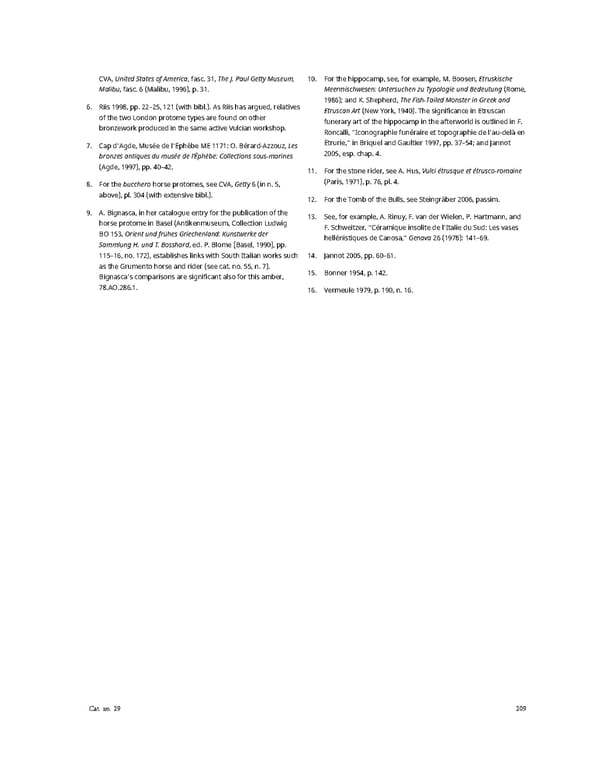CVA,United States of America, fasc. 31, The J. Paul Getty Museum, 10. For the hippocamp, see, for example, M. Boosen, Etruskische Malibu, fasc. 6 (Malibu, 1996), p. 31. Meermischwesen: Untersuchen zu Typologie und Bedeutung (Rome, 6. Riis 1998, pp. 22–25, 121 (with bibl.). As Riis has argued, relatives 1986); and K. Shepherd, The Fish-Tailed Monster in Greek and of the two London protome types are found on other Etruscan Art (New York, 1940). The significance in Etruscan bronzework produced in the same active Vulcian workshop. funerary art of the hippocamp in the afterworld is outlined in F. Roncalli, “Iconographie funéraire et topographie de l’au-delà en 7. Cap d’Agde, Musée de l’Éphèbe ME 1171: O. Bérard-Azzouz, Les Étrurie,” in Briquel and Gaultier 1997, pp. 37–54; and Jannot bronzes antiques du musée de l’Éphèbe: Collections sous-marines 2005, esp. chap. 4. (Agde, 1997), pp. 40–42. 11. For the stone rider, see A. Hus, Vulci étrusque et étrusco-romaine 8. For the bucchero horse protomes, see CVA, Getty 6 (in n. 5, (Paris, 1971), p. 76, pl. 4. above), pl. 304 (with extensive bibl.). 12. For the Tomb of the Bulls, see Steingräber 2006, passim. 9. A. Bignasca, in her catalogue entry for the publication of the 13. See, for example, A. Rinuy, F. van der Wielen, P. Hartmann, and horse protome in Basel (Antikenmuseum, Collection Ludwig F. Schweitzer, “Céramique insolite de l’Italie du Sud: Les vases BO153,Orient und frühes Griechenland: Kunstwerke der hellénistiques de Canosa,” Genava 26 (1978): 141–69. Sammlung H. und T. Bosshard, ed. P. Blome [Basel, 1990], pp. 115–16, no. 172), establishes links with South Italian works such 14. Jannot 2005, pp. 60–61. as the Grumento horse and rider (see cat. no. 55, n. 7). 15. Bonner 1954, p. 142. Bignasca’s comparisons are significant also for this amber, 78.AO.286.1. 16. Vermeule 1979, p. 190, n. 16. Cat. no. 29 209
 Ancient Carved Ambers in the J. Paul Getty Museum Page 218 Page 220
Ancient Carved Ambers in the J. Paul Getty Museum Page 218 Page 220